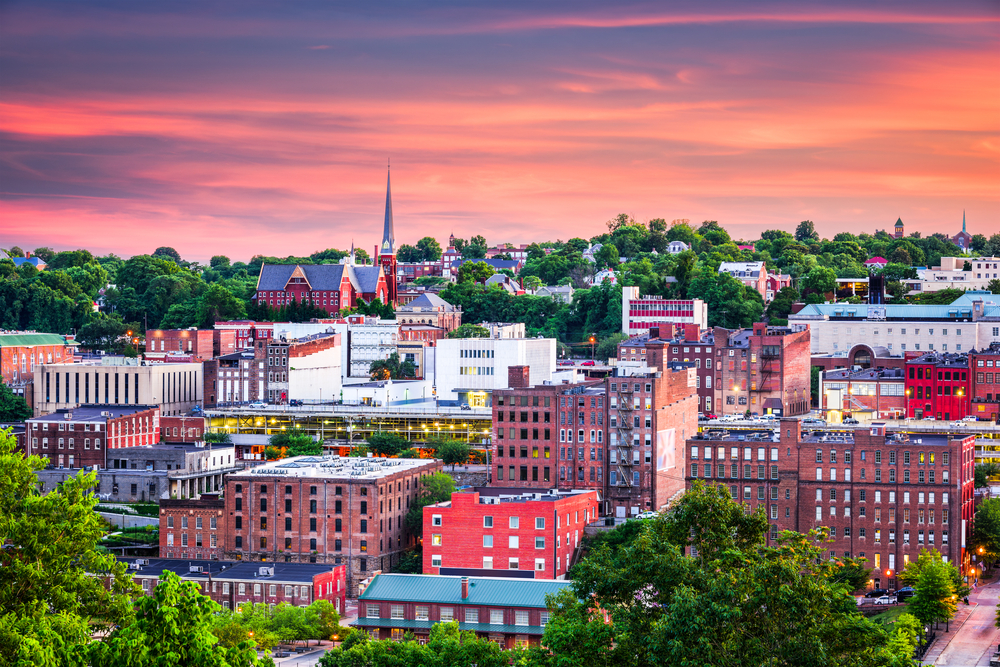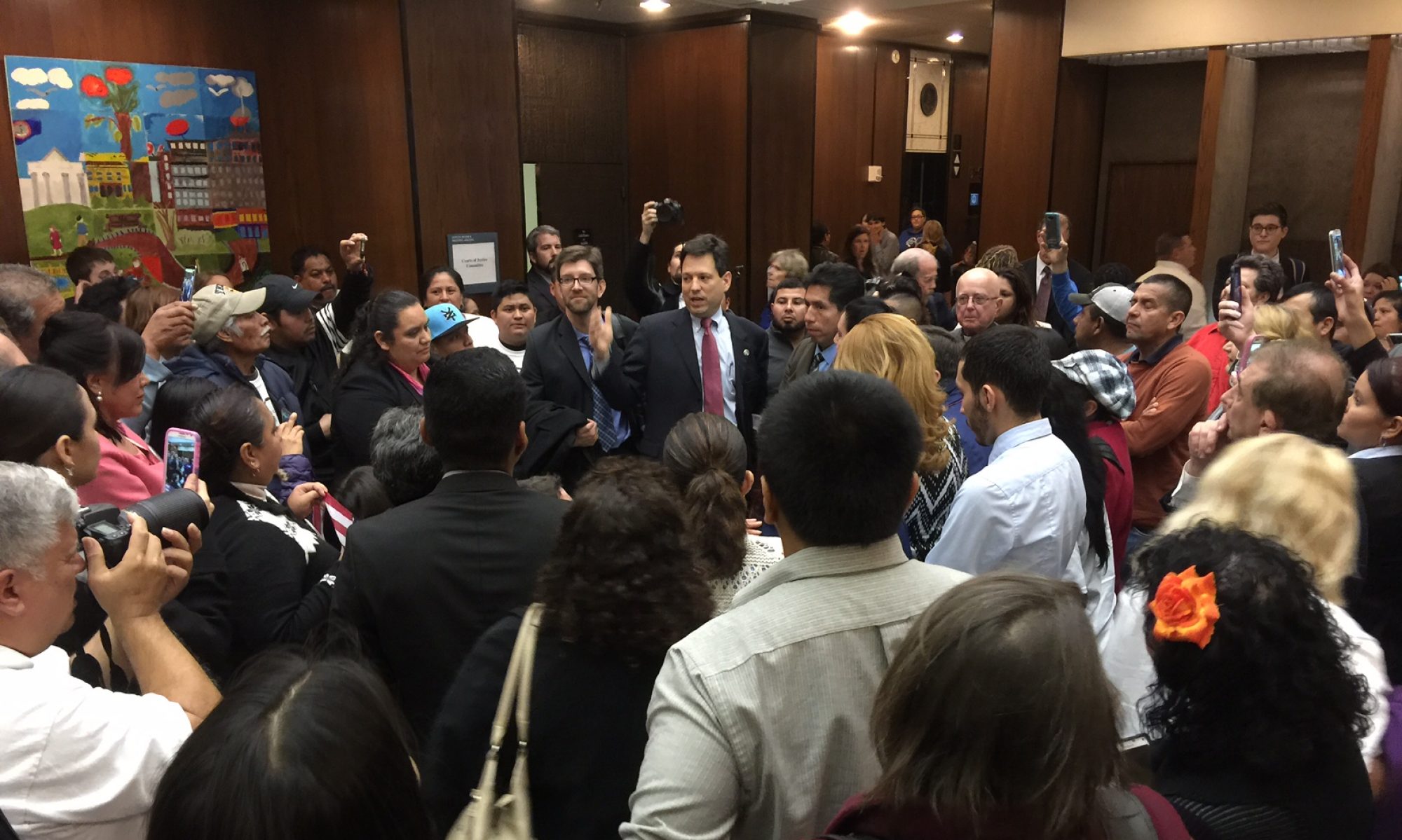SB 1066 and HB 1668 Would Promote Job Growth and Reinvigorate Historical Places

Richmond, VA – Senator Scott Surovell (D-Mt. Vernon) and Delegate Danny Marshall (R-Danville) introduced bipartisan legislation that will continue to facilitate Virginia’s highly successful Historic Rehabilitation Tax Credit. The bills are SB1066 and HB1668. SB 1066 passed the Senate with bipartisan support by a vote 39-1, while HB 1668 was left in the House Finance Committee.
From 1997-1999, Senator Surovell served on the Arlington County Historic Affairs and Landmarks Review Board where he was able to see first-hand the benefits of the historic tax credit and the impact it had on preserving residential and commercial properties. He also owns a property listed on the National Register of Historic Places in New York and his neighborhood in Mount Vernon is listed on the Virginia Register of Historic Places (neither of which would benefit from this legislation).
“Continuation of our HRTC program will pay dividends to the Commonwealth for decades to come in the form of new jobs, income and property taxes, cultural heritage and tourism, business incubation, seismic safety, and the reuse of existing infrastructure and maintain our sense of place and important buildings,” Surovell said. “Historic rehabilitation incentives have been proven effective in 35 other states as a targeted means to attract private investment and capture more federal tax credit dollars. This is particularly important in smaller towns or our historic city centers in need of meaningful economic development support.”
“I look forward to seeing the economic development opportunities across Virginia that come out of this program,” Marshall said. “Preserving historic properties and enhancing tourism opportunities is one important piece of growing our economy in Southside Virginia and I am excited to champion this legislation.”
Preservation Virginia CEO Elizabeth Kostelny praised the legislation. “Communities across the Commonwealth are seeking ways to recover from the past few years of uncertainty,” Kostelny said. “Removing barriers and encouraging the use of the HRTC program can play a major role in creating jobs and reinvigorating under-utilized and derelict structures.”
There is no cap on the number of projects or taxpayers allowed, but each taxpayer is limited to claiming no more than $5 million per year. This restriction disincentivizes investment in historic Virginia buildings and creates unnecessary challenges for larger renovation projects such as the Homestead and the Dan River Building which are providing millions of dollars of benefits to rural Virginia communities in need.
Virginia’s HRTC program helped to fund over 2,500 historic rehabilitation projects. Local governments praise the HRTC for leveraging private sector investment for public benefit.
HRTC’s generate the following significant benefits for the Commonwealth:
- Renovating historic properties saves Virginia’s historic buildings and make historic communities into vibrant neighborhoods and destinations.
- Studies show that the HRTC program creates jobs and generates tax revenue by bringing in private investment of $4.73 for every $1 of tax credit issued.
- One third of a historic restoration project’s cost is recouped by taxpayers during the construction phase and the rest of the investment is fully recouped within 10 years. After 20 years, the average tax credit project nets $5.35 for every $1 spent.1
- The HRTC generates economic activity in small towns across Virginia and enables job creation- including 31,000 jobs over a 17-year period from 1997 – 2013 through not the rehabilitation of buildings but also the surrounding retail and service jobs which occupy many of the area buildings upon completion.2
- The National Trust for Historic Preservation reports that historic rehabilitation costs are on average 60% labor and 40% materials while materials are a larger portion of new construction (40% v. 60%).3
- Construction sector jobs created by the HRTC have a significant multiplier effect across industries by increasing service jobs, transportation jobs, and retail trade jobs.
- Some studies show that 78% of HRTC projects would not proceed without the tax credit investment due to difficulty securing bank financing and thinner margins due to additional costs for historic renovations including code compliance and seismic retrofitting.
- Developers and businesses are able to invest in restoring a historic structure in their community that would otherwise be considered a risky business decision.
- Fifty-one percent of HRTC projects are in low and moderate income census tracts and 75% are in economically distressed areas according to National Park Service research.4
In the City of Bristol, Virginia’s HRTC program has generated $29 million of investment on the Virginia side of the border while the Tennessee side (which does not have an HTC) has seen only $2.2 million of rehabilitation expenditures. The $21 million renovation of the Sessions Hotel in Bristol is an example of this program’s benefits.
The 36th Senate District is replete with properties on the National and State Register of Historic Places including the recently listed 450-home Hollin Hills Community, the Tauxemont Community, River Farm, and George Washington’s daughter’s home – “Woodlawn” – which was the first property to receive the nation’s highest historic legal designation possible as a National Historic Landmark.
The next step for the legislation will be consideration of SB 1066 in the House. If it is approved by the legislature and signed by the governor, it will become law in July 2023.
1“Preserving the Past, Bulding the Future: Historic Rehabilitation Tax Credits at Work in Virginia,” Virginia Department of Historic Resources, October 2, 2018, https://www.dhr.virginia.gov/news/preserving-the-past-bulding-the-future-historic-rehabilitation-tax-credits-at-work-in-virginia/
2“Rehabilitation Tax Credits Frequently Asked Questions,” Virginia Department of Historic Resources, December 11, 2020, https://www.dhr.virginia.gov/tax-credits/rehabilitation-tax-credits-frequently-asked-questions/
3“State Historic Tax Credits: Maximizing Preservation, Community Revitalization, and Economic Impact,” The National Trust for Historic Preservation, November 2018, https://forum.savingplaces.org/HigherLogic/System/DownloadDocumentFile.ashx?DocumentFileKey=ee094e94-4dc7-db43-ae3b-9eaae3e7f179&forceDialog=0
4“Annual Report on the Economic Impact of the Federal Historic Tax Credits for Fiscal Year 2020,” National Park Service, November 2021, https://www.nps.gov/tps/tax-incentives/taxdocs/economic-impact-2020.pdf
###
Senator Scott A. Surovell represents parts of Fairfax, Prince William, and Stafford Counties since 2015. Prior to his time in the Senate, Surovell served six years in the House of Delegates. Surovell lives in Mt. Vernon with his wife and four children. He practices law and has dedicated his legislative career to fighting for Northern Virginia’s fair share, protecting consumers, and preserving our environment for future generations.
